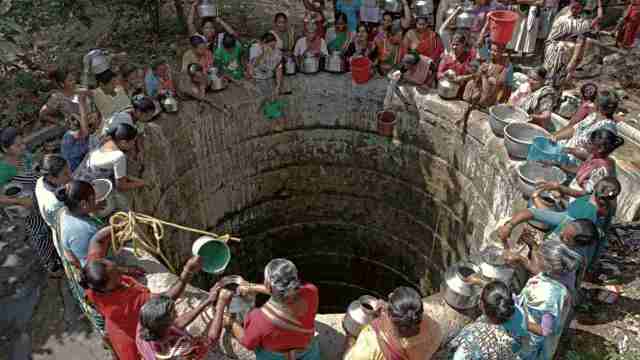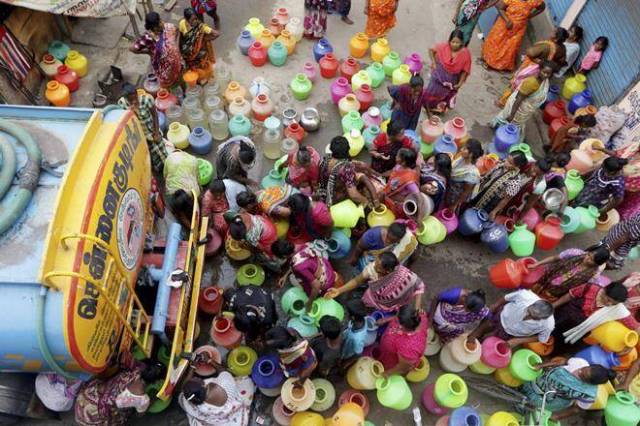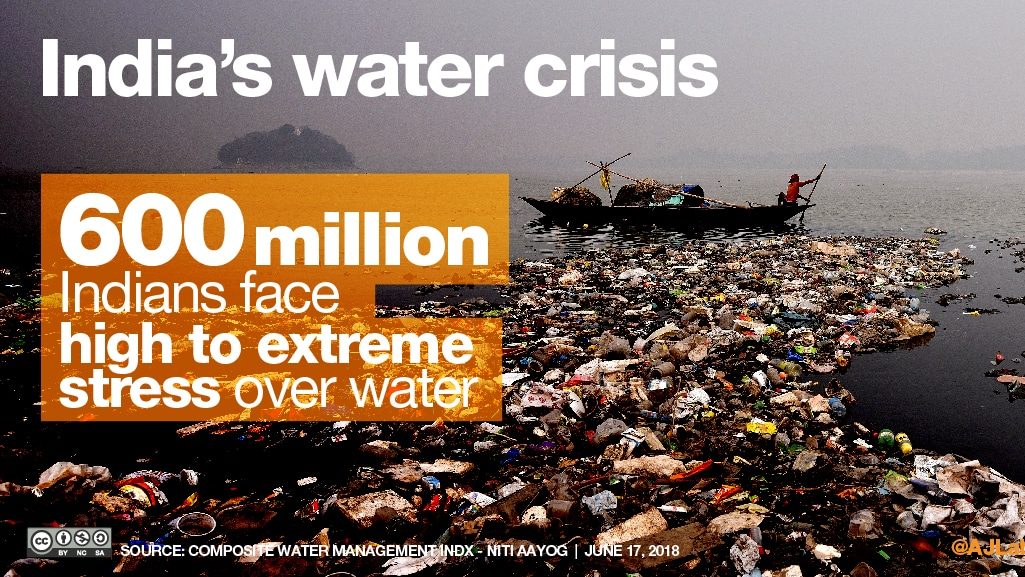7 Reasons Why India’s Infinity War to Save Water is an Unstoppable Problem
India is facing one of its most troubling war to save water. Following two successive long periods of powerless storms, 330 million individuals are affected. This means a quarter of the country’s population is facing a devastating dry season. The circumstance has been especially terrible this year. The western and southern states received less than normal rainfall.
A report by the Composite Water Management Index (CWMI) of the Niti Aayog from 2018 struck the country hard. 21 major cities are expected to reach zero groundwater levels by 2020. This will create a water crisis affecting 100 million individuals. Click here to read the full report.
In any case, 12 percent of India’s populace is as of now living the ‘Day Zero’ situation. A big contributor is an extravagant groundwater extraction. Worsening the situations are the inefficient water board framework and long periods of poor rainfall. The CWMI report raises even more concerns. By 2030, the water request is expected to be double the supply. Thus, the nation is headed towards an extreme water crisis. Expenditures are expected to rise, leading to an inevitable six percent misfortune in the nation’s GDP.
Almost 600 million Indians face high water pressure. 40% of the accessible surface water is utilized every year. This means, about 200,000 people are left helpless each year due to lack of clean water. The interest for water is expected to cross the supply sooner than we know according to the Niti Aayog report.

What’s causing the water crisis in India?
Ranging from mismanagement to natural causes there are many reasons for this water crisis. Some of the main reasons are listed below:
1. Poor management
The absence of efficient water management and division is the biggest cause. There is a vast disparity between urban users, horticulture arena and industry is a big factor. The administration needs to upgrade its interest in innovation. Further, they need to include partners for planning to ease existing barriers.
2. Concretization affecting recharging of groundwater
The issue has been aggravated with expanded concretization. Urban advancement has gagged groundwater assets. Groundwater is not being energized nor is it being put away in manners that upgrades its utilization while holding the regular elements of water. What’s more, the passage of sewage and mechanical waste into water bodies is seriously contracting the accessibility of consumable water.
3. Wastage of water by households
India has been extremely backward in the treatment and re-utilization of wastewater from households. Around 80 percent of the water going to families in India is wasted. This wastage comes in the form of over-flowing water tanks, open taps in the kitchen and bathroom, etc. This water is added to the sewage, which dirty other water bodies including streams, rivers and furthermore land.
4. Industrial waste polluting river waters
A greater part of the waterways in India is contaminated. As per present-day standards, contamination levels of the rivers are through the sky. Waters of the Yamuna, Ganga, and Sabarmati are among the dirtiest. The reason for this is a savage blend of both natural and chemical contaminants.
5. Water treatment plants either ineffective or non-existent
Another reason is poor water quality because of deficient and deferred interest in water-treatment plants. Water in most Indian streams is not fit for drinking, and in numerous stretches not even fit for washing. The Ganga Action Plan was started in 1984. It was expected to tidy up the Ganga River in 25 years. This was supposed to be a life-saving mechanism. Yet, a significant part of the waterway remains contaminated with high coliform at many spots. The offices made are not appropriately kept up and sufficient expenses are not charged for the administration.
6. Leakages in pipelines and during transportation
Another reason is the poor and obsolete implementation of pipelines and transportation used for moving water. This problem goes deeper than just wastage. The rusty water becomes stagnant and increases diseases.
7. Bore-wells and tube-wells exploiting groundwater
The last few decades have seen a boom in the use of tube-wells and bore-wells. This excessive digging has led to the deterioration of groundwater levels to a worrisome extent. Such is the situation that finding water at 50 feet underground is now considered a miracle in some places.
Water Crisis is a reality that can’t be denied any longer
Chennai Water Crisis
The city of Chennai in Tamil Nadu on 19 June 2019, proclaimed that it had reached “Day Zero”. This meant that the city had reached the point when there was no water left. This news shocked the entire world, especially since the city is supplied by four huge water reservoirs. But this year, all the four had run dry. Two years of poor precipitation, especially in late 2017 and all through a lot of 2018, prompted this emergency.

Since faucet water had run out, a few families resorted to the inaccessible and problematic open water pumps. Households with more financial liberties ended up opting for expensive private water tankers.
Bengaluru, a city on the verge of going dry
Chennai is not the only one. Right now at the pinnacle of summer, Bengaluru is confronting an intense water lack. The most noticeably hit areas are the recently created zones and IT hallways. The updated groundbreaking strategy for the city, distributed by the Bengaluru Development Authority (BDA), shows a bleak future. They anticipate that the city’s population will increase by approximately 8 million over the next decade. This means it would hit 20.3 million residents before the end of 2031. That is more than the population of entire nations altogether.
As per an investigation by the Indian Institute of Science (IISc), the city will soon be inhabitable. Should this disturbing trend of population growth continue for another few years, residents will be forced to move elsewhere. There is a heavy strain on the city’s common assets which is prompting the exhaustion of lakes and wells.
A review by the Indian Institute of Human Settlements called attention to that the per capita groundwater accessibility is quickly declining. In 1951 it was 14,180 liters per day, by 2001 it decreased to 5,120 liters. It is required to boil down to 3,670 by 2025. A sum of 21 urban areas has been assessed to fall short on groundwater by 2020. 54% of the wells in India are seeing a fall in water levels.

